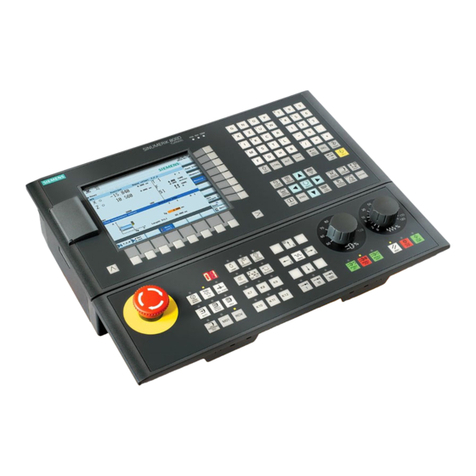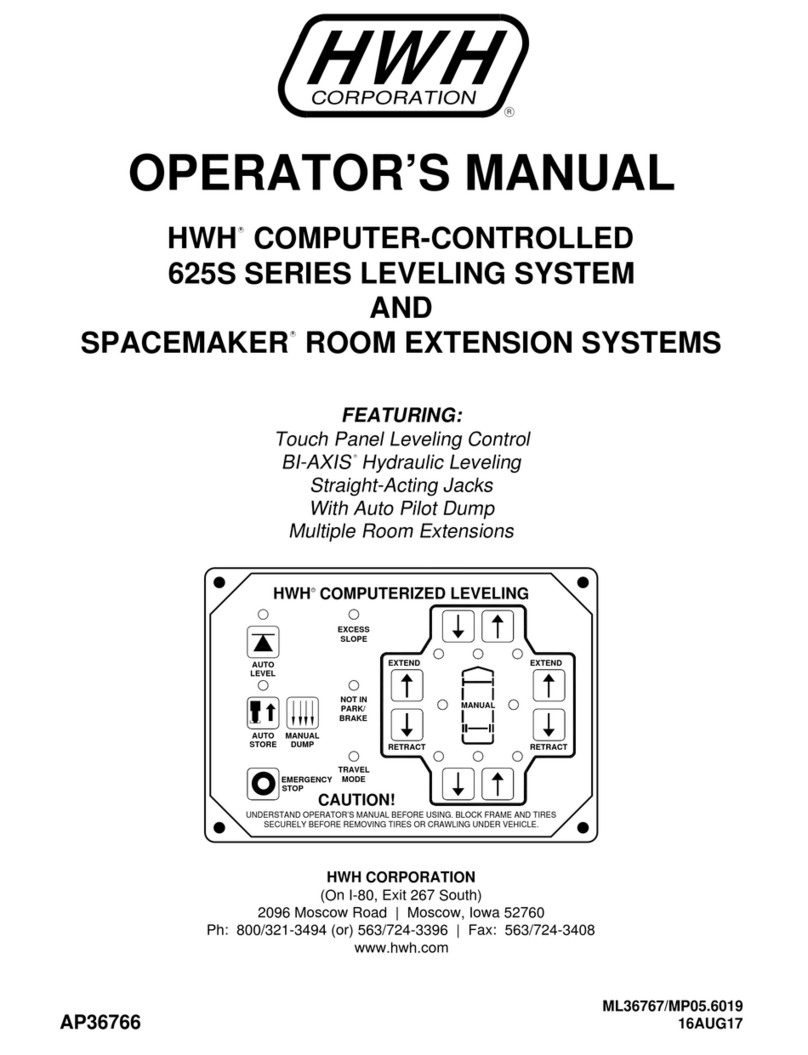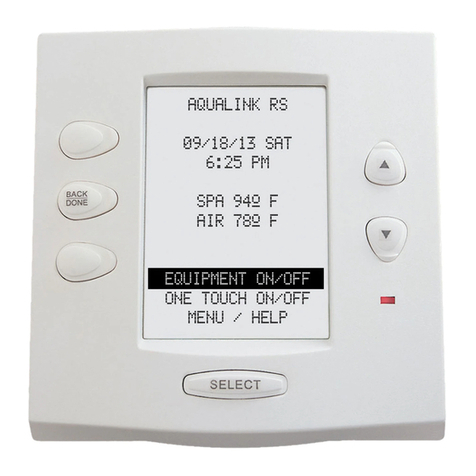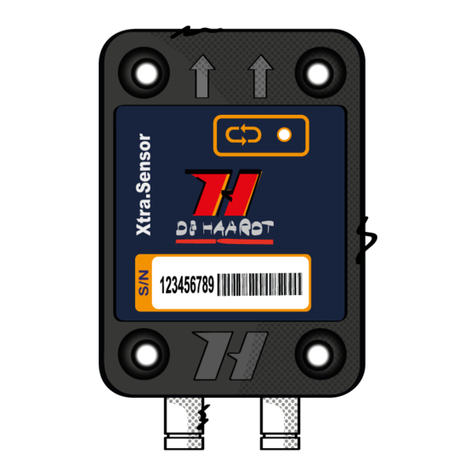Profire Energy PF3100 Series User manual

PF3100 MANUAL
with UI, BMS Controller, Network Expansion,
Modbus RS-485, Ion Pilot, and Thermocouple Cards
REV: 1.0

IMPORTANT SAFETY INFORMATION
Ambient Operating Temperature Range-40°C to +60°C
GENERAL WARNINGS
Installation & use must conform to the directions in this guide.
System must be properly connected to earth-ground for effective operation of flame detection circuitry.
Electrical devices connected to the controller must meet certain electrical standards and be within voltage limits.
Replacement fuses must be ceramic and of correct rating.
Avoid unauthorized replacement of the fuse.
MODELS: PF3100-00A/C, PF3101-00A
Warnings
1. This equipment is suitable for use in Class I, Div 2, Groups A, B, C, and D hazardous locations or non-hazardous
locations only.
2. WARNING – EXPLOSION HAZARD – Do not disconnect equipment while the circuit is live or unless the area is
known to be free of ignitable concentrations.
3. WARNING – EXPLOSION HAZARD – Substitution of components may impair suitability for Class I, Div 1
hazardous locations.
MODELS: PF3102-00A
Warnings
1. This equipment is suitable for use in Class I, Div 1, Groups A, B, C, and D hazardous locations or non-hazardous
locations only.
2. WARNING – EXPLOSION HAZARD – Do not disconnect equipment while the circuit is live or unless the area is
known to be free of ignitable concentrations.
3. WARNING – EXPLOSION HAZARD – Substitution of components may impair suitability for Class I, Div 1
hazardous locations.
4. The flame rods are not intended to be installed and mounted in a Class I, Division 1 or Division 2 hazardous
location. Routing and installation of the flame rods shall be in accordance with the Canadian Electrical Code or
National Electrical Code as per local requirements.
5. CAUTION – Conduit seal required within 18” of enclosure. Div 2 seal not required.
MODELS: PF3103-00B
Warnings
1. This equipment is suitable for use in Class I, Div 1, Groups A, B, C, and D hazardous locations or non-hazardous
locations only.
2. WARNING – EXPLOSION HAZARD – Do not disconnect equipment while the circuit is live or unless the area is
known to be free of ignitable concentrations.
3. WARNING – EXPLOSION HAZARD – Substitution of components may impair suitability for Class I, Div 1
hazardous locations.
4. This assembly must be used with approved Profire probes and thermowells to maintain hazardous locations
certification.
PRIMARY SAFETY CONTROL
FOR USE IN HAZARDOUS LOCATIONS
CAMERA-READY LOGOTYPE FOR TYPE L AND TYPE R LISTING MARKS FOR CANADA AND THE U.S.
These Marks are registered by Underwriters Laboratories Inc.
The minimum height of the registered trademark symbol ® shall be 3/64 of an inch. When the overall diameter of the
UL Mark is less than 3/8 of an inch, the trademark symbol may be omitted if it is not legible to the naked eye.
The font for all letter forms is Helvetica Condensed Black, except for the trademark symbol ®, which is
Helvetica Condensed Medium. No other fonts are acceptable.
Please Note:
The word "MARINE" should only be used for UL Classified marine products.
200-195F 20M/11/97
E474004

TABLE OF CONTENTS
Introduction 1
Modules 1
Features 2
Specifications 2
Mounting Considerations 3
Installation Warnings 4
Wiring Pinouts 4
Wiring 5
PFRN Power and Communication 7
Display User Interface 8
Menu Map 9
Operation 15
Troubleshooting 16
System Errors 17
Resetting to Defaults 17

1
PF3100 MODULE FAMILY
INTRODUCTION
The PF3100 burner management system consists of individual building blocks called modules which can
be mixed and matched to form a complete solution. Each module performs a specific function and is
intended to be installed close to the device they are measuring or controlling. This simplifies wiring and
reduces issues with noise and signal loss compared to centralized control systems. This also allows the
user to purchase only the modules which are necessary for a given application. The modules interact with
one another using a network based communication method to perform a given task safely.
MODULES
UI Module
UI Network Module
UI BMS Module
UI BMS Network Module
UI Modbus Module
UI Modbus BMS Module
BMS Module
BMS Network Module
Ion Pilot Module
Type K Temperature Module

2
FEATURES
• Can view the status of other modules through the PFRN network from the UI Module
• Multiple UIs can show the same info on each screen
• Able to mount the UI away from the burner
• Simple indication of overall status through LEDs allowing end-users to check statuses from afar
• UI’s LCD screen shows statuses of overall system, individual modules, and groups of modules
• Numeric keypad is on the UIX enclosure for easy data entry
• Data logging and field firmware updates
• BMS modules in BMS enclosures can be placed near the burner housing away from the UI interface
• BMS Controller cards provide power to other modules through PFRN ports
• Network cards allow for connections to many other modules to form a single communication network
SPECIFICATIONS
Card Specs
Specs UI Card Network Card BMS Card Modbus Card Ion Pilot Card Thermocouple
Card
Card Type Interface Network Controller IO IO IO
Power Method Power
Consumer
Power Producer Power Producer Power Producer Power
Consumer
Power
Consumer
Voltage Input 36 VDC through
PFRN
12/24 VDC 12/24 VDC 12/24 VDC 36 VDC through
PFRN
36 VDC through
PFRN
Number of Ports 1 PFRN Port 5 PFRN Ports 5 PFRN Ports 4 PFRN Ports 1 PFRN Port 1 PFRN Port
Fuse Rating N/A 6.3 A 10 A 500 mA N/A N/A
Fuse Part
Number
N/A 3412.0113.22 1.2514 3412.0113.22 N/A N/A
Fuse MFG N/A Schurter Schurter Schurter N/A N/A
Enclosure Specs
Specs UIX Enclosure BMS Enclosure AUX Enclosure EPX Enclosure TLX Enclosure
Dimensions Width 30.9 cm
(12.15 in)
Height 23.4 cm
(9.23 in)
Depth 13.4 cm
(5.28 in)
Width 30.9 cm
(12.15 in)
Height 23.4 cm
(9.23 in)
Depth 13.4 cm
(5.28 in)
Width 30.9 cm
(12.15 in)
Height 23.4 cm
(9.23 in)
Depth 13.4 cm
(5.28 in)
Top Width 11.7 cm
(4.61 in)
Base Width 16.8
cm (6.63 in)
Height 21.7 cm
(8.53 in)
Depth 13.3 cm
(5.25 in)
(Body Type)
Standard ½” NPT
Head Connection
Hazloc Rating Class I Div 2 Class I Div 2 Class I Div 2 Class I Div 1 Class I Div 1
Operating
Temperature
-40°C to 60°C -40°C to 60°C -40°C to 60°C -40°C to 60°C -40°C to 60°C
Storage
Temperature
-40°C to 60°C -40°C to 60°C -40°C to 60°C -40°C to 60°C -40°C to 60°C

3
MOUNTING CONSIDERATIONS
Orientation
The UIX, CTX, and AUX enclosures should be mounted upright.
The EPX and TLX enclosures can be mounted in whichever direction makes sense for
the application.
Location
1. The UI Module is typically mounted in an operator-safe, easily accessible area. The
recommended mounting height is 1.5m (5ft) above where the operator will be standing
for ease of use. If there is a BMS card in the UIX enclosure with the UI card, then you
will need to adjust the location accordingly.
2. Mount any BMS enclosures near the corresponding valve train.
3. The Thermocouple card is included inside of a head connection (TLX enclosure) with a
thermocouple probe. The Type K Temperature module comes ready to install into the
thermowells of each tank. Install in a Div 1 rated thermowell.
4. The Ion Pilot module should be located within 50 feet of the pilot it is igniting.
5. The Network and Modbus cards will typically be mounted inside of a UIX, CTX, and AUX
enclosure. Must be within max PFRN run length of 250 ft.
HAZARDOUS LOCATION MOUNTING
In order to maintain the hazardous location rating for the EPX Enclosure, the following conditions must be
met.
The EPX Enclosure lid must be tightened down until it is flush with the base. The locking
screw must be installed into the base.
Each unused base port must be sealed with pipe plugs. Use our plugs or figure out
appropriately rated plugs that are equivalent.
Any base ports in use must be sealed within 18 inches of the EPX Enclosure. All fittings must
have at least 5 threads of engagement.

4
INSTALLATION WARNINGS
Before installing the PF3100, please review the following list of warnings.
Failure to observe the following may result in death, electrocution,
property damage, product damage, and/or government fines.
1. For burners greater than 12.5 MMBtuh, additional modules may be required for use with
the PF3100 system.
2. It is recommended that the low fire feature be used with anything above 1 MMBtuh. To
use the PF3100 on burners greater than 5 MMBtuh, the Proof of Closure feature must
be used.
3. Failure to properly ground the pilot assembly back to the PF3100’s Ion terminal may
result in accidental electrocution, product damage, or failure to ignite the pilot.
4. The PF3100 generates 20kV- 40kV at its high voltage output terminal which can cause
cardiac arrest. Do not touch or place any object near the ignition coil’s high voltage
terminal or connected ignition wire while the product is operating. Even without making
physical contact with the terminal, it is possible to draw a spark from several inches
away, especially if the pilot bracket is not properly grounded.
5. Make sure that the PF3100 enclosures are securely closed each time after opening
the enclosure. This protects the internal circuitry from moisture damage and other
environmental concerns. Moisture damage is not covered by the product warranty if the
door has been left open.
WIRING PINOUTS
/ VDC
COMMON
EARTH GND
Power
Input
Relay
Output
4-20mA /
Dry Contact
Inputs
Powered Outputs Dry Contact Inputs
STATUS
HFV
HFV +
SSV
SSV +
SSV
SSV +
Pilot -
Pilot +
Aux Out - (4-20mA)
Aux Out + (4-20mA)
START
START +
POC
POC +
AUX IN
AUX IN +
ESD
ESD +
PRESSURE
PRESSURE +
LEVEL
LEVEL +
/ VDC
COMMON
EARTH GND
Power
Input
Relay
Output
4-20mA /
Dry Contact
Inputs
Powered Outputs Dry Contact Inputs
STATUS
HFV
HFV +
SSV
SSV +
SSV
SSV +
Pilot -
Pilot +
Aux Out - (4-20mA)
Aux Out + (4-20mA)
START
START +
POC
POC +
AUX IN
AUX IN +
ESD
ESD +
PRESSURE
PRESSURE +
LEVEL
LEVEL +
*Output terminals are limited to 4A max current draw. 4-20 mA output terminals are limited to 20mA.

5
WIRING
Modules
The wiring in this section of the document is required for all PF3100 installations. Skipping or performing
any steps in this section incorrectly can result in the PF3100 not working properly.
6. Run appropriately zoned conduits between the modules. The UIX and CTX enclosures
have pre-drilled conduit holes in two different sizes – 0.5 in (1.27 cm) and 0.75 in (1.91
cm). There are 4 of each size available. Remove the hole seals as needed and install the
conduit.
7. Run a Cat5e or higher rated Ethernet cable through each conduit (between the BMS
Controller Card and each other card). Make sure that the UI Card is plugged into the port
on the BMS Controller Card labelled “UI Port”.
8. Make sure that all other cards are plugged into one of the other ports on the BMS
Controller Card.
9. Connect power wires according to specifications from the BMS Controller to an
appropriately rated power supply running at 12 or 24VDC.
10. Connect power wires according to specifications from each Ethernet switch to an
appropriately rated power supply running at 12 or 24VDC.
11. Wire valves (including PoC, PoLF, and Temperature Control Valve) to the BMS Controller
Card.
12. Wire the Pilot valve to the Pilot +/- terminals.
13. Wire the Main valve to the High Fire / Main +/- terminals.
14. If the Safety Shutoff Valves (SSV) are required in your application, wire one valve to the
SSV1 +/- terminals and the other valve to the SSV2 +/- terminals.
15. Make sure that each valve has a separate return wire. Multiple valves sharing common
return wires will not function properly.
16. Connect valve EGND wires to Earth Ground.
1 7. Note that the PF2100 valve output called “Low Fire” has been replaced by two new
valve outputs called Safety Shutoff Valve 1(SSV1) and Safety Shutoff Valve 2 (SSV2).
This is for applications that require two valves for safety. These two contacts always
follow each other but are provided separately for improved current handling and also for
improved troubleshooting.
18. Wire dry contact inputs to the BMS Controller Card as required.
19. There are 5 dry contact inputs on the PF3100. The expected connection to each of these
is a switch. These contacts must all be closed (shorted) in order for the system to start.
Jumpers are provided for each of these by default. If you need to use a particular contact
for your application, simply remove the associated jumper and connect a switch in its
place.
20. Wire the start contact to the BMS Controller Card as required.
21. The Start Contact can be used to attach a remote start/stop switch. This is typically
connected to a PLC dry contact output.
22. When the contact is open, the system is stopped. For safety reasons, a double action is
required to start the system remotely via this contact. This is accomplished by closing
the switch, opening it, and then closing it again. Once the system is running, simply
open the switch again to stop it.
23. Wire the 4-20 inputs or Pressure/Level Switches to the BMS Controller Card if required.
24. The Level Contact can be connected to a Level Switch installed right above the fire tube.
This is used to signal when the tank level drops below a certain minimum. This is often
the point at which the fluid in the tank is no longer covering the fire tube. Running the
burner with an empty tank can damage both the fire tube and the tank.
25. The Level Contact is time averaged to help reject brief fluctuations in tank level which

6
might be a result of vibration. The contact must be open continuously for 2 or 20
seconds (depending on the “Pressure/Level Delay” setting) before the system will
shutdown. If “Level Restart” is enabled, the system will restart automatically when the
Level Contact recloses.
26. Note that the PF2100 has level and pressure contact inputs on the Terminal Card and
corresponding 4-20 inputs on an expansion card. The PF3100 has contacts and 4-20
inputs overloaded on the same inputs. The behavior is selectable in software. Also note
that there is not a separate low and high pressure contact. If both switches are desired,
they need to be wired in series and connected to the pressure contact.
27. Wire thermocouples to the Thermocouple Card as required. The TC1A thermocouple
inputs are mandatory and must be connected to a Dual Element thermocouple. The
other thermocouples are only required when a second process temperature (such as the
outlet temperature on a line heater) must be monitored.
28. Connect a dual element, Type K thermocouple to the TC1A inputs.
29. Note that TC1A, TC1B, TC2A, and TC2B require dual element Type-k thermocouples. This
is different from the PF2100 which only supported a single TC for the auxiliary input.
30. Wire the ignition coil and flame rod to the Ion Pilot Card.
Flame Rod/Ignition Coil
This section provides some tips to set up the system for reliable ignition and flame detection.
Wire Lengths
When wiring the ignition and flame detection circuits, the wire length between the ignition coil and pilot
should be no more than 5m (15ft). If the wire lengths are too long, the PF3100 may not be able to deliver
enough energy to the ignition rod to ignite the pilot. The PF3100 may also fail to receive a signal from the
flame rod for detecting flame.
Grounding
Properly grounding the pilot assembly back to the PF3100 Ion Pilot module is critical for proper ignition
and flame detection. The Earth Ground wire should run from the EGND terminal of the Ion Pilot card to
the pilot assembly. This wire should be connected to the burner housing. Use a multimeter to verify that
the burner housing has electrical continuity with the pilot assembly.
Ignition
Coil Straight
Silicone
Boot
PF3100 Ion Pilot
Card Header
Ferrule Single
Rod
EGND
+Ion
{
Coil
+

7
PFRN POWER AND COMMUNICATION
Below is a small sample network describing module communication through Profire’s propriety
communication network, PFRN.
UI CARD
(Interface Class)
BMS CARD
(Controller Class)
ION PILOT CARD
(IO Class)
THERMOCOUPLE
CARD
(IO Class)
NETWORK
EXPANSION CARD
(Network Class)
MODBUS CARD
(Network/Controller Class)
BMS CARD
(Controller Class)
ION PILOT CARD
(IO Class)
THERMOCOUPLE
CARD
(IO Class)
BMS CARD
(Controller Class)
ION PILOT CARD
(IO Class)
THERMOCOUPLE
CARD
(IO Class)
BMS CARD
(Controller Class)
ION PILOT CARD
(IO Class)
THERMOCOUPLE
CARD
(IO Class)

8
DISPLAY USER INTERFACE
POWER LED
Off: UI is not powered
On: UI is powered
STATUS LED
Off: UI is not powered
Flashing Green: Startup sequence
Green: System is running
Red: System is stopped
Amber: Warning or alarm is present
LCD SCREEN
Displays diagnostics, current settings, and options
when navigating through menus.
STOP KEY
Used to stop the system which immediately turns
off the burner.
BACK KEY
Used to go back one screen and cancel out of
dialog boxes.
ARROW KEYS
Used to navigate through menus.
TRIPLE BAR KEY
Menu key that opens a menu of global options.
OK KEY
Used to enter a menu, acknowledge a prompt,
save an edited setting or return to the home
screen.
? (HELP) KEY
Allows access to system help. One button press
brings up tooltips for items on the current screen.
Two button presses opens the integrated user
manual for the selected item.
+/- KEYS
Used to adjust settings up or down.
START KEY
Used to start the system.
NUMBER PAD
Used to key in changes in settings.
DELETE KEY
Used to delete the last character entered when
using the number pad.
ENCLOSURE DOOR LOCK
Mechanism for securing the door. A flat-head
screwdriver is needed to open and close the enclo-
sure.

9
MENU MAP
The following sections include brief descriptions of each PF3100 menu, including the valid settings range
and default setting. Any entries highlighted in gray are hidden in the menu by default.
Settings: Temperature Setpoints
This menu is used to adjust the Temperature Setpoints.
MENU MAP BRIEF DESCRIPTION RANGE DEFAULT SETTING CUSTOM SETTINGS
HighTempSetpoint High Temp Setpoint for
Process TC
0 to 1350˚C
32 to 2462˚F
90˚C
194˚F
PilotOffSetpoint Pilot Off Setpointfor
Process TC
0 to 1350˚C
32 to 2462˚F
85˚C
185˚F
LowFireSetpoint Low Fire Setpoint for
Process TC
0 to 1350˚C
32 to 2462˚F
85˚C
185˚F
ProcessTempSetpoint Process Temp Setpoint for
Process TC
0 to 1350˚C
32 to 2462˚F
80˚C
176˚F
LowTempAlarmSetpoint Low Alarm Setpoint for
Process TC
0 to 1350˚C
32 to 2462˚F
50˚C
122˚F
AuxHighTempSetpoint High Temp Setpoint for Aux
TC
0 to 1350˚C
32 to 2462˚F
90˚C
194˚F
AuxProcessTempSetpoint Process Setpoint for Aux TC 0 to 1350˚C
32 to 2462˚F
20˚C
68˚F
Settings: Deadband
MENU MAP BRIEF DESCRIPTION RANGE DEFAULT SETTING CUSTOM SETTINGS
TemperatureDeadband Deadband setting used
for various temperature
setpoints
0 to 13˚C 2˚C
AuxTempDeadband Deadband setting used for
Aux temperature setpoints
0 to 13˚C 2˚C
420AuxIn1Deadband Deadband setting used for
various 4-20mA Aux In 1
setpoints
0-16 mA 2 mA
LELDeadband Deadband setting used for
LEL setpoint
0-16 mA 2 mA
FuelPressureDeadband Deadband setting used
for various fuel pressure
setpoints
0-16 mA 2 mA
TankLevelDeadband Deadband setting used for
various tank level setpoints
0-16 mA 2 mA
VoltageDeadband Deadband setting used for
various voltage setpoints
0 to 5V 2 V
Settings: 4-20 Input Setpoints
MENU MAP BRIEF DESCRIPTION RANGE DEFAULT SETTING CUSTOM SETTINGS
420AuxIn1HighSetpoint 4-20mA Aux In 1 High
Setpoint
4-20 mA 14 mA
420AuxIn1LowSetpoint 4-20mA Aux In 1 Low
Setpoint
4-20 mA 9 mA

10
420LELSetpoint 4-20mA Lower Explosive
Limit Setpoint
4-20 mA 14 mA
420FuelPressureHighSetpoint 4-20mA Fuel Pressure High
Setpoint
4-20 mA 17.33 mA
420FuelPressureLowSetpoint 4-20mA Fuel Pressure Low
Setpoint
4-20 mA 5.6 mA
420TankLevelHighSetpoint 4-20mA Tank Level High
Setpoint
4-20 mA 19.6 mA
420TankLevelLowSetpoint 4-20mA Tank Level Low
Setpoint
4-20 mA 12 mA
Settings: Commissioning
MENU MAP BRIEF DESCRIPTION RANGE DEFAULT SETTING CUSTOM SETTINGS
ControllerCommissionDate Controller Commissioning
Date, YYYY-MM-DD
0 - 0xFFFFFFFF 0
ControllerLocation Controller Location 0 to 64 chars "Test Location"
ControllerName Controller Name (User
Assigned)
0 to 64 chars "Test Name"
ControllerVoltageSetting The Voltage Setting of the
Controller Module
0 = 12V
1 = 24V
1
L1PasswordEnable Enable Level 1 Password Enable, Disable Disable
L1Password Level 1 Password 1 to 8 chars 1397
L2Password Level 2 Password 1 to 8 chars 2684
DeviceConfig[0] Ignition Module MAC
address
6 hex bytes -
DeviceConfig[1] Temperature Module MAC
address
6 hex bytes -
Settings: Process Control
MENU MAP BRIEF DESCRIPTION RANGE DEFAULT SETTING CUSTOM SETTINGS
RestartOptions Restart Options Bit Vector:
b0 = Low Voltage Restart
Enable
b1 = High Voltage Restart
Enable
b2 = Low Fuel Pressure
Restart Enable
b3 = Low Tank Level Restart
Enable
Defined Bits 0
StatusContactMode Status Contact Mode:
0 = Default
1 = Alarm when Remote
Stop
2 = Process Control
3 = Follow Flame
4 = Low Temp Alarm
In List 0

11
420AuxOutMode 4-20mA Aux Output Mode:
0 = Disabled
1 = Proportional Valve
Control
2 = Process Temperature
Echo
3 = Aux Temperature Echo
4 = Fuel Gas Pressure Echo
5 = Tank Level Echo
In List 0
PilotOffEnable Pilot Off Enabled:
0 = Disabled
1 = Enabled
In List 1
LowFireEnable Low Fire Enabled:
0 = Disabled
1 = On at Process Setpoint
2 = On at Low Fire Setpoint
In List 0
AuxTempEnable Aux Temp Enabled:
0 = Disabled
1 = Secondary Process
Control
2 = Secondary High Temp
ESD
3 = Display Only
In List 0
ProcessControl Process Control Enabled:
0 = Disabled
1 = On/Off Control
In List 1
RelightAttempts The number of times that
the controller will attempt
to relight the pilot in the
event of a flame fail
0-3 3
Settings: Valves
MENU MAP BRIEF DESCRIPTION RANGE DEFAULT SETTING CUSTOM SETTINGS
PilotValvePWM Pilot Valve PWM Duty Cycle 20-100% 60%
SSV1PWM SSV1 PWM Duty Cycle 20-100% 60%
SSV2PWM SSV2 PWM Duty Cycle 20-100% 60%
HighFirePWM High Fire PWM Duty Cycle 20-100% 60%
ProportionalValveMinOpening Proportional Valve (TCV)
Minimum Opening (Also
used as the Low Fire
Setting)
0-70% 40%
Settings: IO
MENU MAP BRIEF DESCRIPTION RANGE DEFAULT SETTING CUSTOM SETTINGS
ProofOfClosureEnable Used to enable the Proof Of
Closure Dry Contact Input.
0-1 0
AuxInContact Function of the AuxIn
Contact:
0 = Disabled
1 = PoLF (Wire to HFV)
2 = PoC2 (Wire to SSV2)
3 = PoP (Wire to Pilot Valve)
In List 0

12
TankLevelInputMode Tank Level Input Mode:
0 = Disabled
1 = Dry Contact
2 = 4-20mA Input
In List 0
420TankLevelMax The 4-20mA Tank Level
Maximum value which is
the value that is associated
with a 20mA loop current.
0-65535L 120L
420TankLevelMin The 4-20mA Tank Level
Minimum value which is
the value that is associated
with a 4mA loop current.
0-65535L 0L
FuelPressureInputMode Fuel Pressure Input Mode:
0 = Disabled
1 = Dry Contact
2 = 4-20mA Input
In List 0
420FuelPressureMax 4-20mA Fuel Pressure Max 0-65535 kPa 30 kPa
Settings: Ignition
MENU MAP BRIEF DESCRIPTION RANGE DEFAULT SETTING CUSTOM SETTINGS
CoilDriveMode Coil Drive Mode:
0 = Default Spark Pattern
In List 0
FlameDetectionGain Flame Detection Gain 1-7 3
Settings: Timing
MENU MAP BRIEF DESCRIPTION RANGE DEFAULT SETTING CUSTOM SETTINGS
PurgeTime Purge Time 10-900 s 30 s
PilotToMainDelay Pilot to Main delay 5-600 s 15 s
LowToHighFireDelay Low fire to High fire delay 30-600 s 30 s
Settings: Temp Module Field Calibration
MENU MAP BRIEF DESCRIPTION RANGE DEFAULT SETTING CUSTOM SETTINGS
ProcTemp1SpanCal Span Calibration Factor for
TC1A
-32768 to 32767 1
ProcTemp1ZeroCal Zero Calibration Factor for
TC1A
-32768 to 32767 0
ProcTemp2SpanCal Span Calibration Factor for
TC1A_Check -32768 to 32767 1
ProcTemp2ZeroCal Zero Calibration Factor for
TC1A_Check
-32768 to 32767 0
ProcTemp3SpanCal Span Calibration Factor for
TC1B
-32768 to 32767 1
ProcTemp3ZeroCal Zero Calibration Factor for
TC1B
-32768 to 32767 0
AuxTemp1SpanCal Span Calibration Factor
for TC2A
-32768 to 32767 1
AuxTemp1ZeroCal Zero Calibration Factor
for TC2A
-32768 to 32767 0
AuxTemp2SpanCal Span Calibration Factor
for TC2A_Check
-32768 to 32767 1

13
AuxTemp2ZeroCal Zero Calibration Factor
for TC2A_Check
-32768 to 32767 0
AuxTemp3SpanCal Span Calibration Factor
for TC2B
-32768 to 32767 1
AuxTemp3ZeroCal Zero Calibration Factor
for TC2B
-32768 to 32767 0
Settings: Ignition Module Field Calibration
MENU MAP BRIEF DESCRIPTION RANGE DEFAULT SETTING CUSTOM SETTINGS
FlameTemp1SpanCal Span Calibration Factor for
TCA
-32768 to 32767 1
FlameTemp1ZeroCal Zero Calibration Factor for
TCA
-32768 to 32767 0
FlameTemp2SpanCal Span Calibration Factor for
TCA_Check -32768 to 32767 1
FlameTemp2ZeroCal Zero Calibration Factor for
TCA_Check
-32768 to 32767 0
FlameTemp3SpanCal Span Calibration Factor for
TCB
-32768 to 32767 1
FlameTemp3ZeroCal Zero Calibration Factor for
TCB
-32768 to 32767 0
Settings: Controller Configuration
MENU MAP BRIEF DESCRIPTION RANGE DEFAULT SETTING CUSTOM SETTINGS
DeviceConfig[0]
DeviceConfig[30]
MAC_Address[n] The Ethernet MAC Address 0x000000000000 to
0xFFFFFFFFFFFF
0
ModelNumber[n] The model number: 3100,
3101, 3102, etc.
3100-3199 0
Role[n] 0 = No Assigned Role
1 = Default Role
2-255=Secondary Function
(not implemented)
In List 0
Settings: Appliance Configuration
MENU MAP BRIEF DESCRIPTION RANGE DEFAULT SETTING CUSTOM SETTINGS
ControllerConfig[0] Configuration info for the
first expected controller
within this appliance
ControllerConfig[11] Configuration info for the
last expected controller
within this appliance
MAC_Address[n] The Ethernet MAC Address 0x000000000000 to
0xFFFFFFFFFFFF
0
ModelNumber[n] The model number: 3100,
3101, 3102, etc.
3100-3199 0

14
Role[n] 0 = No Assigned Role
1 = Independent
Temperature
2 = Primary Temperature
Source
3 = Secondary Temperature
Source
4 = Temperature Sink
5-255 = Not Implemented
In List 0
MinControllersRunning The minimum number of
controllers that must be
running in order for the
appliance to keep running.
0-12 0
MaxAdjacentShutdown The maximum number of
adjacent controllers that can
shutdown before and the
appliance keep running.
0-12 0
EndsAreAdjacent Treat the controller at
the beginning of the list
as being adjacent to the
controller at the end of the
list.
0-1 0
RunningDefinition This setting determines
how the appliance decides
if a given controller is
running or not:
0 = Communicating
1 = Green State
2 = Blue or Green State
In List 1
ShutdownTimeout One or more rules must be
broken continuously for this
amount of time before the
appliance will shutdown.
The counter will only stop
counting down if no rules
are being violated. The
counter will keep counting
down if the particular rules
being violated change
during this time so long
as one or more rules are
always being violated.
1-600 10

15
OPERATION
STARTING THE SYSTEM
From any screen on the UI, press the Start Key on the keypad. If there are alarms present, you will be
notified.
If no alarms are present, you will be prompted to confirm that you want to start. Press the OK key to
confirm or the Back key to cancel.
If you are on the Status Tab, the system will show a count down of 5 seconds (or more if the purge cycle
has not been completed). At the end of the countdown, the system will open the pilot valve, and ignite
the pilot with the ignition coil. The flame quality should go to 100% on the screen. Then the system will
begin its process control trying to maintain the process setpoint.
STOPPING THE SYSTEM
From any screen on the UI, press the Stop Key on the keypad.
You will be prompted to confirm that you want to stop. Press the OK key to confirm or the Back key to
cancel.
Note that the Stop function on the UI is not safety rated! It is provided as a convenience. This function
may be unavailable if the UI is offline, disconnected from the network, or otherwise incapacitated. If a
safety rated stop button is required, connect an appropriately rated mushroom switch to the ESD contact
on the BMS controller.

16
TROUBLESHOOTING
ETHERNET COMMUNICATIONS
BLUE POWER LEDS NEXT TO THE ETHERNET PORTS OF THE MODULES ARE OFF
1. Verify that the Ethernet cable is plugged in on both ends.
2. Check that the port supplying power has a Blue LED illuminated indicating that it is
currently supplying power.
3. Check that the Ethernet cable is wired correctly to the T568B standard. (use a standard
Ethernet cable tester)
4. Verify that the Ethernet cable is not cut or otherwise damaged.
5. Check all user replaceable fuses on the module.
GREEN LINK LEDS NEXT TO THE ETHERNET PORTS OF THE MODULES ARE OFF
1. Verify that the Ethernet cable is plugged in on both ends.
2. Check that the Ethernet cable is wired correctly to the T568B standard. (use a standard
Ethernet cable tester)
3. Verify that the Ethernet cable is not cut or otherwise damaged.
4. Ensure that all Ethernet switches in the system are wired correctly and receiving power
5. Ensure that there are no more than 4 cascaded Ethernet switches between any two
modules in the system
FLAME DETECTION
SYSTEM HAS VISIBLE FLAME BUT CANNOT DETECT IT
1. The flame rod, pilot assembly and the gap between them should be fully engulfed in
flame. If not, adjust the rod positioning.
2. Check that the flame detection wiring does not exceed the recommended maximum
length.
3. Check that the Ion+ wire is securely connected as per the appropriate wiring diagram.
4. Check that the ground connection between the PF3100 and the pilot assembly is
present and secure.
5. Put the PF3100 into Manual Mode and use the Review Menu to check the flame quality
level.
6. The PF3102-00C Ignition Module is designed to be mounted in the burner housing to
minimize the length of flame ionization wire required. Generally speaking, the shorter
the wire, the less problems you will experience.
7. Ensure that the ground wire from the pilot nozzle is connected to the ground terminal on
the ignition module.
8. If you need to use a long length of ignition wire, try increasing the flame detection gain
setting under the “Ignition” settings on the UI

17
SYSTEM ERRORS
The UI screen will display any shutdown messages, alarm codes, or warning messages that the system
is currently experiencing. For each of these entries, an explanation will accompany the system error.
Shutdown messages
These indicate the reason that the system last shutdown. In the event of a safety shutdown (ESD), the
system will shutdown in 1 second or less. The flame failure response time (FFRT) spans 2 seconds, after
which the system will initiate shutdown.
Alarm codes
These indicate a persistent problem that must be cleared before the system can be restarted.
Warning messages
These indicate a problem that may be developing or a condition from which the system may
automatically restart once cleared.
RESETTING TO DEFAULTS
The system settings can all be reset to factory defaults by following these instructions:
1. Make sure that the system is stopped.
2. Navigate to the “Reset to Factory Defaults” menu item.
3. Use the Arrow Keys to change the setting to “Yes” and then press the OK Key. The
system will display “Parameter Saved” and will reboot.
4. After rebooting, the system will display the message “CONFIGURATION RESET TO
DEFAULT” alternating with “Check Settings and Setpoints.”
5. Press the OK Key to acknowledge this warning.
This process only resets the user settings back to factory defaults and does not affect the calibration
settings.
Other manuals for PF3100 Series
5
This manual suits for next models
2
Table of contents
Popular Control System manuals by other brands
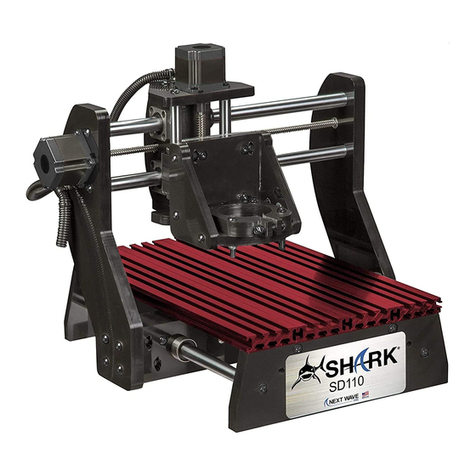
Next Wave CNC
Next Wave CNC SHARK SD110 owner's manual

BECKWITH ELECTRIC
BECKWITH ELECTRIC Syncrocloser M-5625 manual
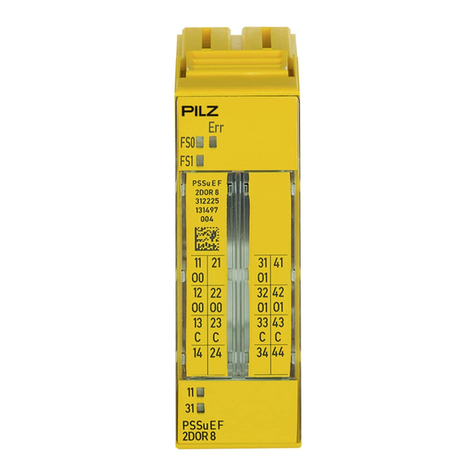
Pilz
Pilz PSSu E F 2DOR 8 operating manual
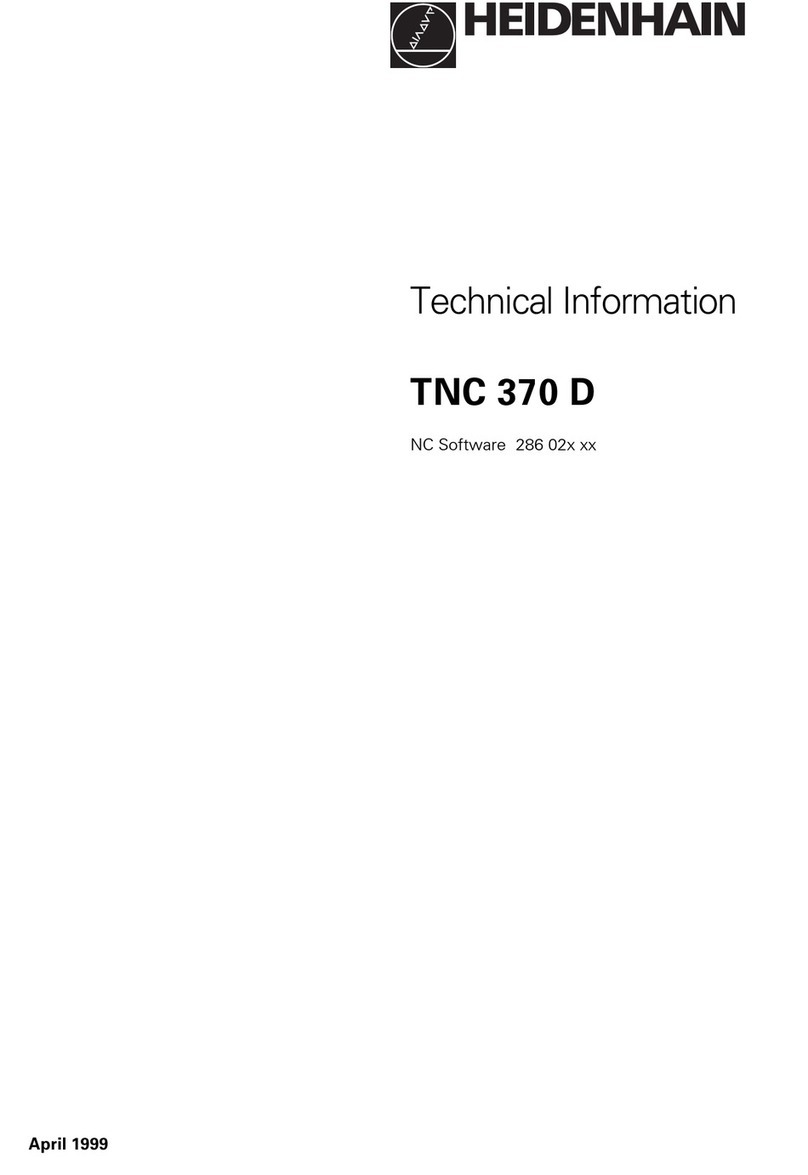
HEIDENHAIN
HEIDENHAIN TNC 370 D technical information
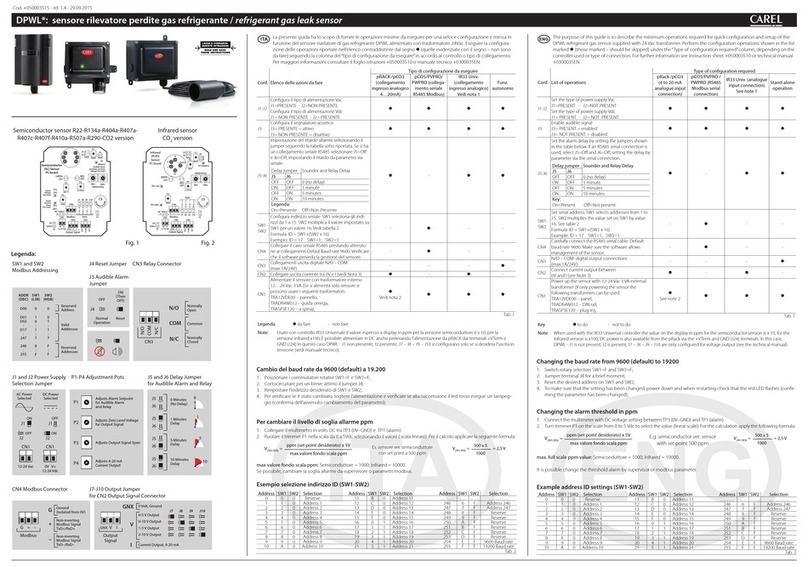
Carel
Carel DPWL Series quick start guide
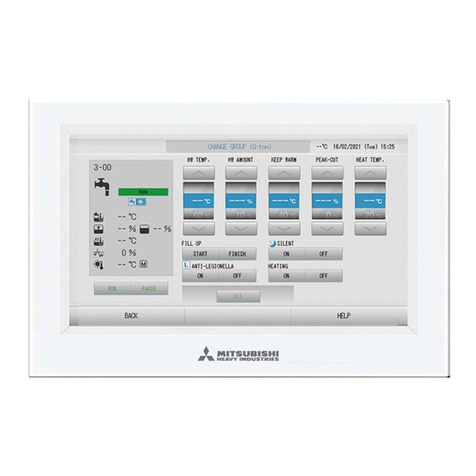
Mitsubishi Heavy Industries
Mitsubishi Heavy Industries SC-SL4-AE Technical manual
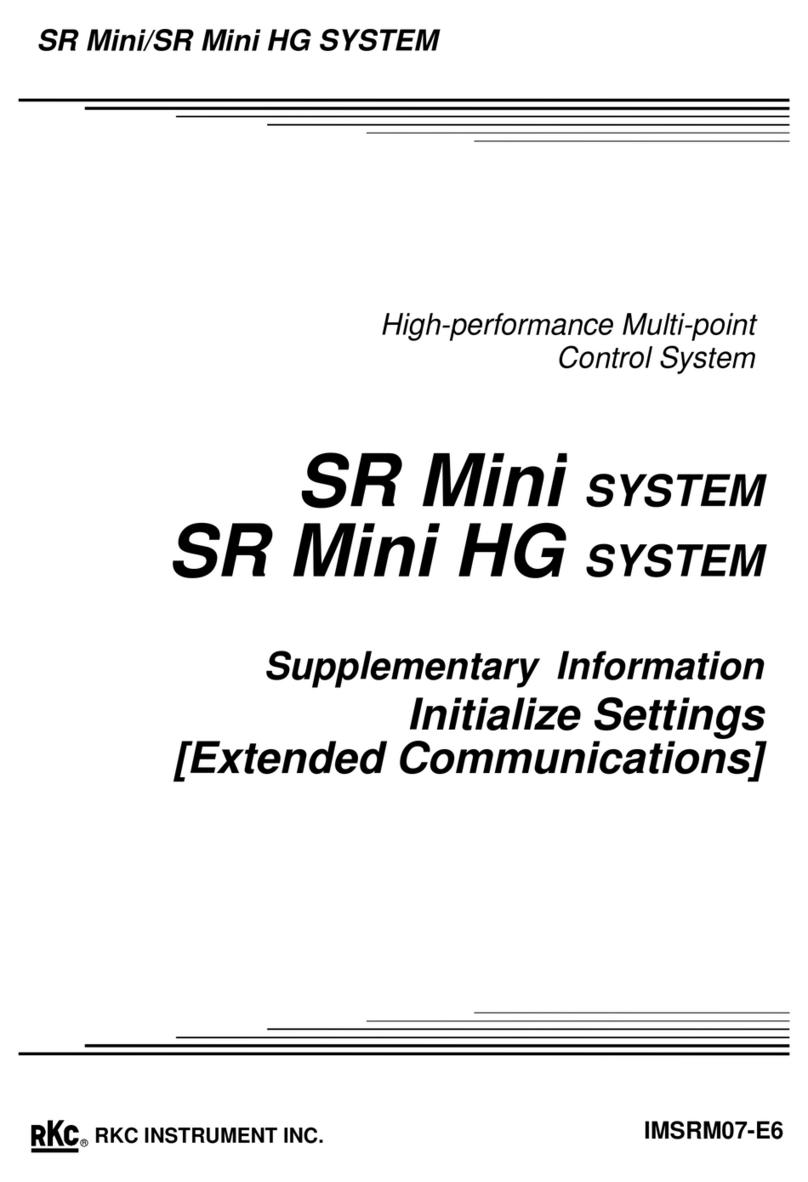
RKC INSTRUMENT
RKC INSTRUMENT SR Mini System Supplementary information
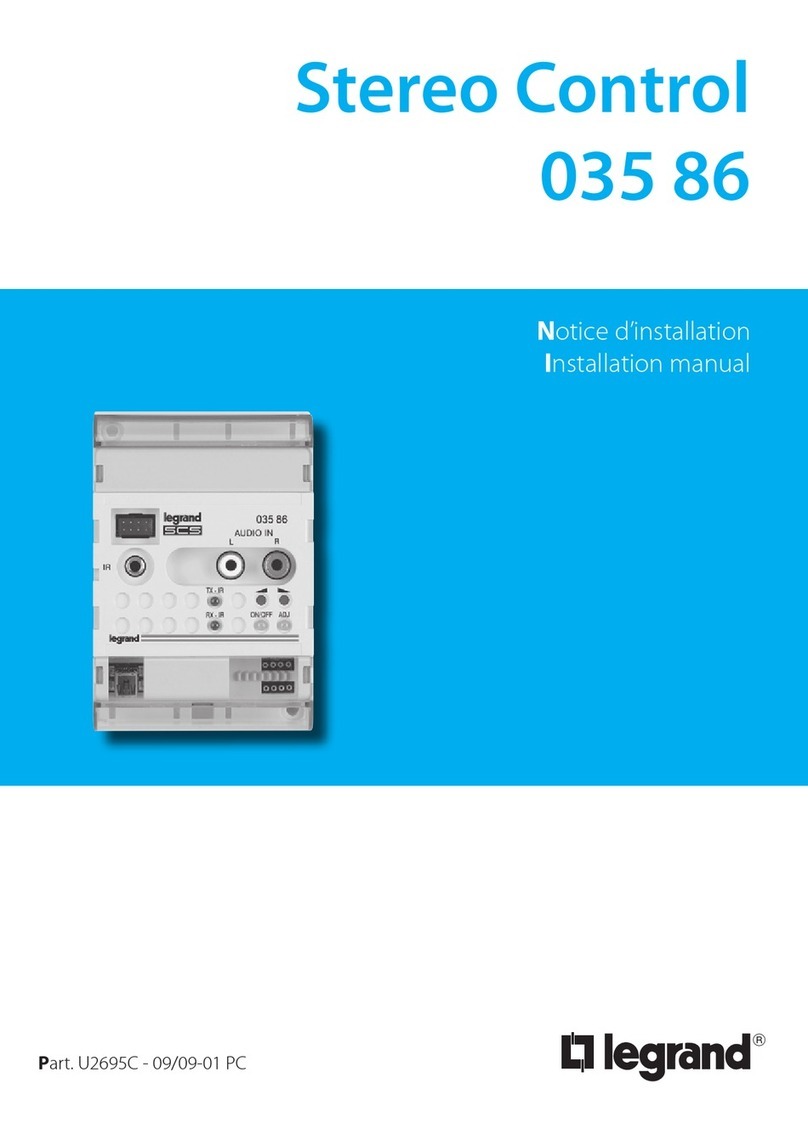
LEGRAND
LEGRAND 035 86 installation manual

Key Digital
Key Digital FATCAT Series Setup guide
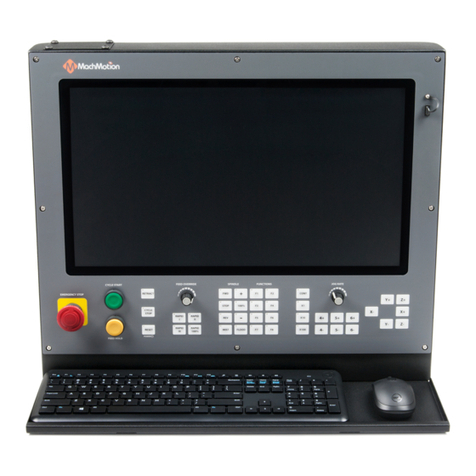
MachMotion
MachMotion 2000 Series General installation manual
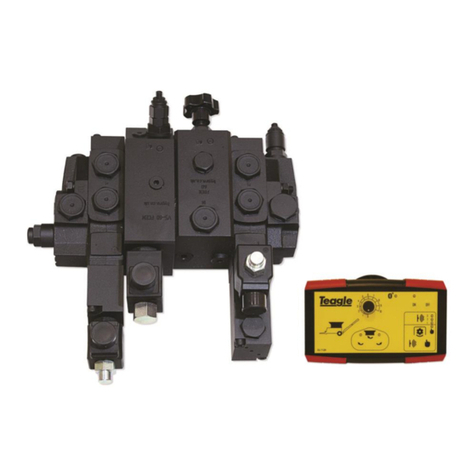
Teagle
Teagle Tomahawk C12 Instruction book / parts list

Sony
Sony Dream Machine ICF-C900HS operating instructions
